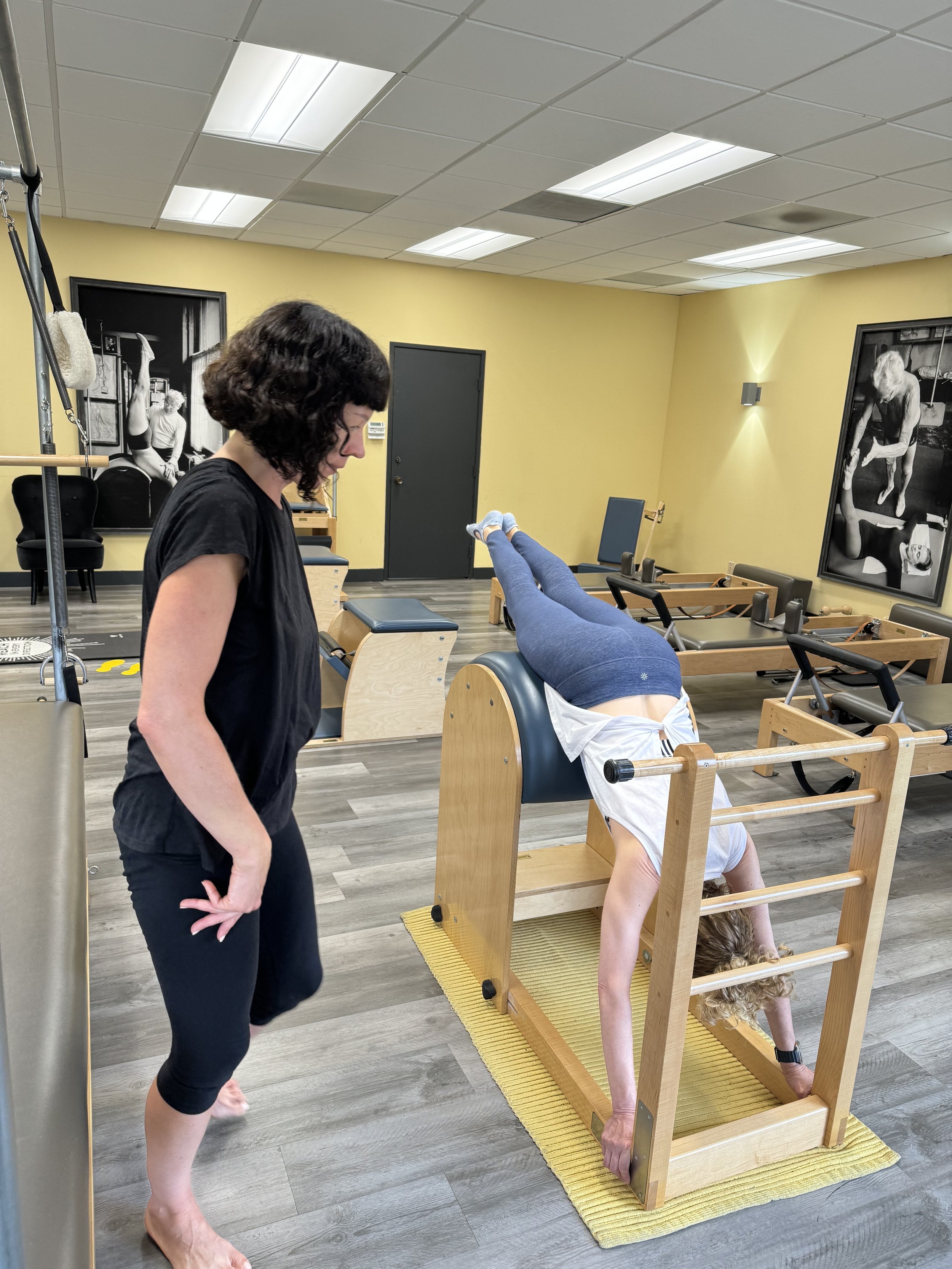How Pilates can adapt for your client's movement

How can you make that client get into the position you were taught they needed to be in? Is there a true perfect position for all the choreography? What can you do to get that client to do Pilates as they need for their own body and practice? How detailed does this need to be in the moment?
This topic is one that came up with a Mentee who came to work with me. She has been teaching for over 20 years but, for her own practice she was getting frustrated as she was being told by other teachers that she had to have her foot here, body in this specific position and then try and move. It didn’t work for her.
She had issues from years of dance and also her hyper mobility. So she was feeling defeated, that something was wrong with her and that she was not “allowed “ to do certain Pialtes exercises due to her ability and range in her own movement. This broke my heart!
Joseph Pilates believed his work was for everybody! Every exercise could be adapted to the client. That is important! We need to remember this as we teach to that body in front of us, this body is unique and we will adjust the work of Pilates to work and fit this client’s body!
In the case of this Mentee she was told her foot had to be in a specific place fully, period. She let me know how it was so uncomfortable for her and it hurt. I asked to see the exercise and for her to set herself up as she had been told “she had to be there”.
The minute her feet were in the position she was told they had to be the first thing that I saw was her knees were in such hyperextension it made ME hurt for her. She also due to that position of her feet that then sent her knees into extreme hyperflexion made it where she couldn’t move, she had no where to go and no way to fire into anything to make the move happen.
She had been told her foot had to be all the way against the shoulder rest and to really get that heel under, but for her that sent her into that hyperextension and then chaos just ensued from there.
I told her to just put as much of her foot against the shoulder rest as she could and when she did she was able to lengthen her knees but, keep out of that hyperextension and she was then able to move, to use her legs and her full body and make that move happen for her.
She felt connected and strong. She didn’t feel stuck or have pain.
That moment was key for her and her body and also it goes to just asking “can you?” instead of “do this”
There was no need for this Teacher to have to fully connect her whole foot in that way as it sent her body into a not-good position. Yet by just saying “connect as much of your foot as you can to the shoulder rest” she then made that decision that felt right for her body.
Isn’t that what we want our clients to do as they practice Pilates? To figure out where their body should be or can be for them?
If we put that client where we think or have been told or that it has to look like this we are possibly placing their body in a place that is painful, they can’t move from or just feels not right for them.
Pilates is for every BODY. Each exercise can be broken down or built up to for that body. There is always placement for safety but, that should not be anything that prevents someone from moving right?
When students are going through my Teacher Training Program they are learning the choreography and it can be easy to fall into that trap of this has to look like this or this is the correct way to do this exercise.
The thing to really think about as you teach your client is that they are not adapting to the exercise, we are guiding them so that the exercise will adapt to them. They get building blocks to go where they can go and how they get there and what it looks like will be different for every client..
When we go into teaching we can remember how it felt in our own journey learning the exercises, the choreography and how our mind and body figured things out. Not to use that same trajectory for the client but, to remember how it felt to learn, figure things out. To always remember that there is no perfect in Pilates.
Pilates adapts to our client’s movement. That is how we can adapt Pilates to our clients.
It sounds super simple. All we have to do is see where that client can bring their legs, where they can reach those arms and find that balance point for themselves in their Teaser. We don’t need their legs to be at this specific angle because what if they have super long legs and short torso? How can they balance if you have them taking those long legs into a position that they can’t get to and hold?
Pilates is for every body and there is no reason to try and fit our clients into the same box. Pilates is a practice and just like my Mentee we figure out where they can set up and move from. We make sure they are safe and guide them along their own journey.
Listen to 2 Pilates chicks podcast “ Pilates cueing is there a right or wrong way” for more!
